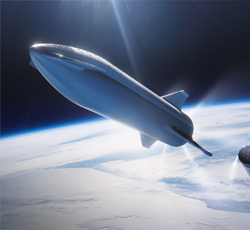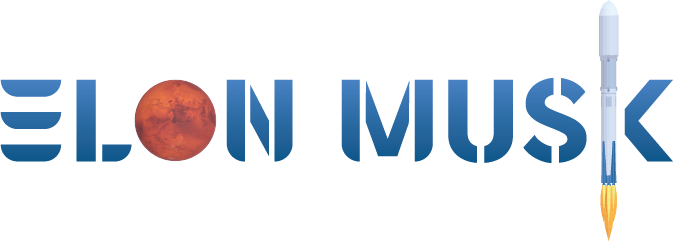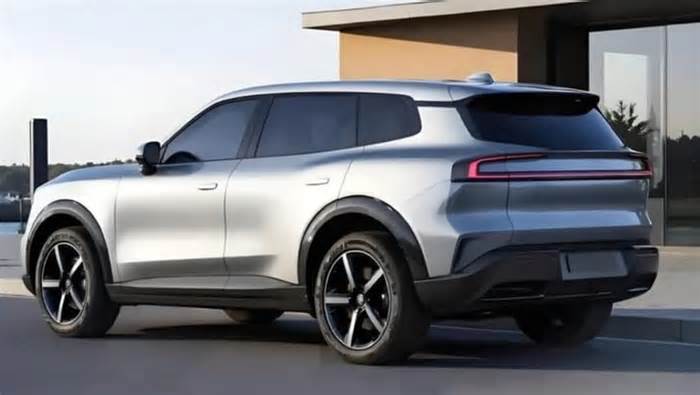
2025 In-flight Wi-Fi Speed Rankings: Starlink, Hawaiian Airlines, Qatar Airways, Delta Airlines, Turkish Airlines – Airlines and Providers Ranked
- by Focus on Travel News
- Jul 08, 2025
- 0 Comments
- 0 Likes Flag 0 Of 5

inflight Wi-Fi
In-flight Wi-Fi speed in 2025 has become an essential factor in the competitive landscape of the airline industry, with carriers and connectivity providers striving to deliver better service and reinforce their brand value. As passengers increasingly expect reliable and fast in-flight internet, airlines are turning connectivity into a critical point of differentiation and potential revenue generation.
Today, Wi-Fi on planes is no longer a novelty but an expectation much like hotel internet service. Reflecting this, the American Customer Satisfaction Index now includes “Quality of in-flight Wi-Fi” in its airline benchmarks. However, in-flight Wi-Fi ranked dead last among 21 categories, falling below baggage handling, seat comfort, and even airline food. This underscores the urgent need for airlines to improve the onboard connectivity experience.
Examining Wi-Fi Performance by Airline
Speedtest data for Q1 2025 reveals dramatic variations in in-flight Wi-Fi performance across airlines. Hawaiian Airlines and Qatar Airways stand out at the top, with significantly higher median download speeds and lower latency compared to competitors. Hawaiian Airlines delivers median download speeds exceeding 160 Mbps at the 50th percentile, while Qatar Airways also posts impressive results, both relying on SpaceX Starlink’s low-Earth orbit (LEO) satellite constellation.
Other airlines, such as Spirit Airlines, Air Canada, Delta Airlines, Breeze Airlines, American Airlines, and Aeromexico, also offer respectable connectivity. These carriers maintain 10th percentile download speeds above 10 Mbps, which ensures basic browsing and email remain usable for nearly all passengers. However, higher latency and lower upload speeds often limit real-time services such as video calling or gaming, which may even be welcome by fellow passengers seeking a quieter cabin environment.
At the lower end of the rankings, airlines like Lufthansa are held back by older connectivity infrastructure. Lufthansa’s service is often limited by the Deutsche Telekom LTE ground-to-air network, which results in a much slower and less consistent internet experience. Similarly, Japan Airlines, Turkish Airlines, and Cathay Pacific—despite their premium reputations—also appear at the lower end of Speedtest rankings, suggesting that parts of their fleets still use older, poorer-performing connectivity options.
How Fast is Turkish Airlines’ Inflight Internet
Turkish Airlines occupies a particularly interesting position in the global in-flight connectivity market. As one of the world’s most connected carriers with an expansive route network spanning Europe, Asia, Africa, and the Americas, expectations are high for its onboard service quality—including Wi-Fi. Yet Speedtest data places Turkish Airlines toward the lower end of the performance rankings, with median download speeds under 40 Mbps.
Turkish Airlines relies on Türk Telekom for its in-flight connectivity. Türk Telekom partners with providers like Panasonic Avionics Corporation to deliver service that combines GEO satellite links with managed onboard systems. While this setup offers consistent coverage across a large network, it struggles with latency and speed compared to newer LEO solutions. Passengers may find basic browsing and messaging adequate, but streaming or video conferencing remains a challenge.
Recognizing this gap, Turkish Airlines has signaled intentions to upgrade its onboard connectivity to remain competitive with other leading carriers adopting next-generation systems. As LEO constellations like Starlink become more widely adopted and new entrants like Amazon’s Project Kuiper prepare to enter the market, Turkish Airlines will likely face increasing pressure to enhance its Wi-Fi offering to align with passenger expectations and defend its premium brand positioning.
Moreover, Turkish Airlines’ strategic location in Istanbul—an intercontinental hub connecting Europe and Asia—gives it a unique incentive to invest in better connectivity. Long-haul travelers transferring through Istanbul are increasingly comparing their in-flight experience to that of Gulf carriers and European competitors, many of which are actively upgrading their onboard internet infrastructure. Improved Wi-Fi will not only meet passenger expectations but also strengthen Turkish Airlines’ reputation as a modern, customer-focused global airline.
The Role of Connectivity Service Providers
Connectivity providers play a crucial role in determining the quality of in-flight Wi-Fi. Airlines often contract multiple providers, and the technology used varies by aircraft model and route. SpaceX Starlink is the clear standout among providers, thanks to its dense LEO constellation that delivers median download speeds around 152 Mbps, median upload speeds over 24 Mbps, and exceptionally low latency near 44 milliseconds.
Other providers, like Hughes and Intelsat, offer strong multi-orbit solutions that combine GEO and LEO satellite capacity. Hughes delivers median download speeds above 84 Mbps, while Intelsat reaches over 61 Mbps. Both providers balance GEO coverage with LEO performance to improve speed and reliability. Viasat, a GEO-only provider, also performs well considering its technology, delivering median download speeds over 50 Mbps despite inherent latency challenges.
By contrast, providers such as Deutsche Telekom, which rely on a ground-based LTE network across Europe combined with GEO satellite, face significant limitations. Median download speeds barely exceed 4 Mbps, making the service barely usable for anything beyond basic messaging or email. This difference highlights how technological choices and satellite partnerships impact passengers’ experiences.
Partnerships and Coverage Strategies
Airlines must choose among a complex landscape of connectivity providers, each offering different advantages. For instance, Hawaiian Airlines and Qatar Airways have rapidly adopted Starlink to capitalize on its superior speed and latency. Other airlines diversify by working with multiple providers: American Airlines partners with Viasat and Intelsat, while Delta collaborates with Viasat and Hughes.
Connectivity service providers also differ in their business models. Some, like Panasonic Avionics Corporation, act as integrators rather than owning satellite constellations themselves. They partner with various satellite operators to offer hybrid solutions combining GEO and LEO networks. Panasonic’s approach allows airlines to mix and match capacity depending on routes and fleet configurations, offering flexible coverage but requiring careful integration and maintenance planning.
Meanwhile, providers like MTN Satellite Communications focus on niche markets including maritime and remote land-based services, while also offering in-flight connectivity. Similarly, Nelco in India partners with Intelsat to provide GEO-based connectivity over Indian airspace, illustrating the regional complexity of the industry.
Technology Advancements and Competitive Pressure
The shift from GEO to LEO technology is transforming expectations around in-flight Wi-Fi. While GEO satellites offer broad coverage, they struggle with latency, often exceeding 600 milliseconds. LEO networks like Starlink, by orbiting much closer to Earth, reduce latency to levels comparable with terrestrial broadband, making real-time applications far more viable on board aircraft.
Recognizing this advantage, airlines are investing heavily in upgrades. United Airlines, for example, is transitioning its entire fleet to Starlink service, promising free high-speed access for all MileagePlus members. SAS is also rolling out Starlink to offer free “gate-to-gate” Wi-Fi across its fleet by year’s end. These investments are not merely about passenger convenience but also about creating stickier customer loyalty and enhancing brand value in an increasingly competitive aviation market.
Other improvements come from onboard technology. Panasonic Avionics is pioneering the use of Wi-Fi 6E on aircraft, expanding bandwidth and reducing interference for passengers. Wi-Fi 6E supports the 6 GHz frequency band, which has more channels and faces less congestion than traditional 2.4 and 5 GHz bands, translating to faster, more reliable connections in crowded cabin environments.
Future of In-flight Connectivity
Looking ahead, competition is poised to intensify even further. SpaceX Starlink continues to expand its LEO network rapidly, while Amazon’s Project Kuiper and AST SpaceMobile are preparing to launch their own constellations, promising even more options for airlines seeking best-in-class connectivity. These new entrants could drive down costs, improve service quality, and force existing providers to innovate to retain their market share.
Beyond satellites, airlines will also need to upgrade onboard systems and ground infrastructure to fully capitalize on next-generation connectivity. Old equipment, regulatory restrictions on certain routes, and installation costs remain barriers. However, these investments are necessary as passenger expectations continue to rise and as airlines recognize in-flight connectivity as a fundamental part of their brand promise and customer experience strategy.
Ultimately, in-flight Wi-Fi is no longer an amenity but a competitive necessity. As technology advances and airlines upgrade their fleets, travelers can expect faster, more reliable connections that support everything from streaming entertainment to video conferencing. The race to provide the best in-flight Wi-Fi is well underway, and the winners will be those who prioritize innovation, customer experience, and strategic partnerships with the right connectivity providers.
Please leave this field empty
Newsletter subscription
Please first to comment
Related Post
Stay Connected
Tweets by elonmuskTo get the latest tweets please make sure you are logged in on X on this browser.






 Energy
Energy


















